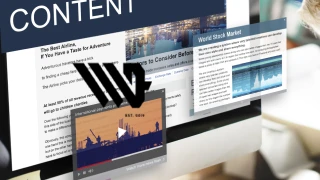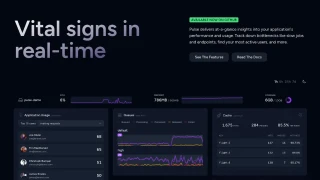- / Contents
- / Start-to-finish Guide to Develop a Content-releasing Strategy

Start-to-finish Guide to Develop a Content-releasing Strategy
Content-releasing strategy is vital for optimizing your content marketing efforts, increasing audience engagement, achieving marketing goals, and building a strong and recognizable brand presence.
In today's fast-paced digital world, content is still the king. A well-crafted content-releasing strategy is the cornerstone of successful content marketing, empowering businesses to navigate the vast online landscape with purpose and precision. This article delves into why a content-releasing strategy is indispensable for optimizing your content marketing efforts, enhancing audience engagement, achieving marketing goals, and building a robust and recognizable brand presence.
Creating a content-releasing strategy is an essential aspect of content marketing to ensure that your content reaches the right audience at the right time and helps achieve your marketing goals.
Here are some steps to develop an effective content-releasing strategy:
- Define Your Objectives: Clearly outline the goals and objectives you want to achieve through your content marketing efforts. Whether it's increasing brand awareness, generating leads, driving website traffic, or improving customer engagement, knowing your objectives will guide your content creation and distribution efforts.
- Understand Your Target Audience: Know your target audience inside out. Conduct thorough research to understand their preferences, pain points, interests, and behavior. Utilizing this information will enable you to customize your content in a way that connects with your audience and provides meaningful benefits.
- Create a Content Calendar: Develop a content calendar that outlines the schedule for releasing different types of content. This could include blog posts, social media updates, videos, infographics, podcasts, etc. Align your content calendar with your marketing objectives and key events or seasons relevant to your industry.
- Consider Content Types and Platforms: Determine the types of content that best suit your audience and objectives. Consider the platforms where your target audience is most active and plan content distribution accordingly. For instance, if your audience is highly engaged on Instagram, focus on visual content. If they prefer in-depth articles, prioritize blog posts and articles.
- Plan for Consistency: Consistency is key to building and maintaining an audience. Develop a steady content release schedule, whether it's daily, weekly, or monthly, and stick to it. This will help build anticipation among your audience and establish your brand as a reliable source of valuable content.
- Emphasize Quality Over Quantity: While consistency is important, never compromise on the quality of your content. Ensure that each piece of content provides value to your audience and aligns with your brand's voice and values.
- Leverage Data and Analytics: Regularly analyze the performance of your content releases using data and analytics. Track metrics such as website traffic, engagement, social media reach, conversion rates, etc. This data will provide insights into what works and doesn't, helping you refine your content strategy.
- Consider Seasonality and Trends: Keep an eye on industry trends and seasonal events that can impact your content strategy. Creating content around trending topics or seasonal themes can increase its relevance and shareability.
- Utilize Content Promotion: Don't rely solely on organic reach. Consider using paid promotion on social media and search engines to boost the visibility of your content and reach a broader audience.
- Encourage Engagement and Sharing: Create content that encourages engagement and sharing. Ask questions, run contests, or incorporate social sharing buttons to make it easy for your audience to spread your content across their networks.
Remember, a content-releasing strategy is not static. Continuously monitor and adapt your strategy based on your feedback and results. Flexibility and responsiveness are essential in the dynamic world of content marketing.
In summary, a content-releasing strategy is vital for optimizing your content marketing efforts, increasing audience engagement, achieving marketing goals, and building a strong and recognizable brand presence. It provides direction, focus, and the means to adapt to the dynamic digital landscape, ultimately helping you stay ahead of the competition and reach your target audience effectively.














